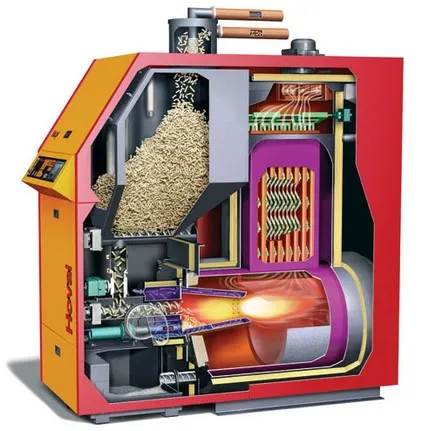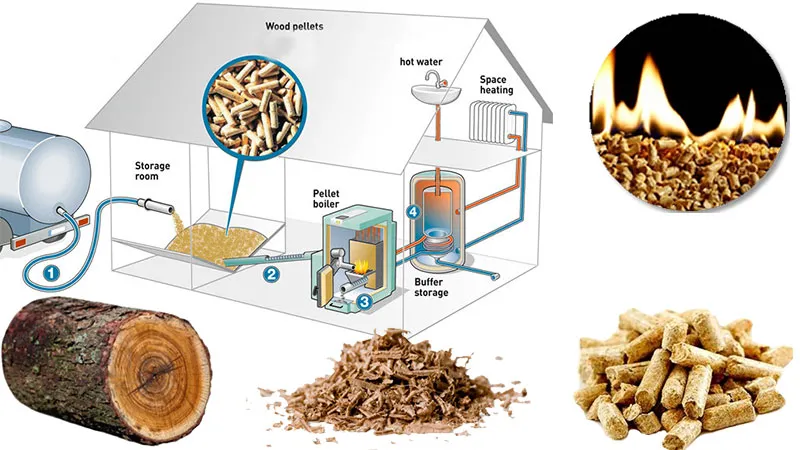Wood Pellets
Pellets are a processed form of wood, which make them much more condensed and uniform, and therefore more efficient. The pellets are stored and automatically fed into the boiler by hopper.
Boiler
A biomass boiler works in a very similar way to conventional boilers, combusting fuel to produce heat that is then used to heat water. Biomass boilers are normally substantially bigger than traditional boilers since the boiler needs to be larger to hold the larger volume of fuel.
Heat Exchange
The heat generated from the combustion process is transferred to a heat exchanger or boiler vessel. Water or another heat transfer fluid circulates through the heat exchanger, absorbing the heat from the biomass combustion.

